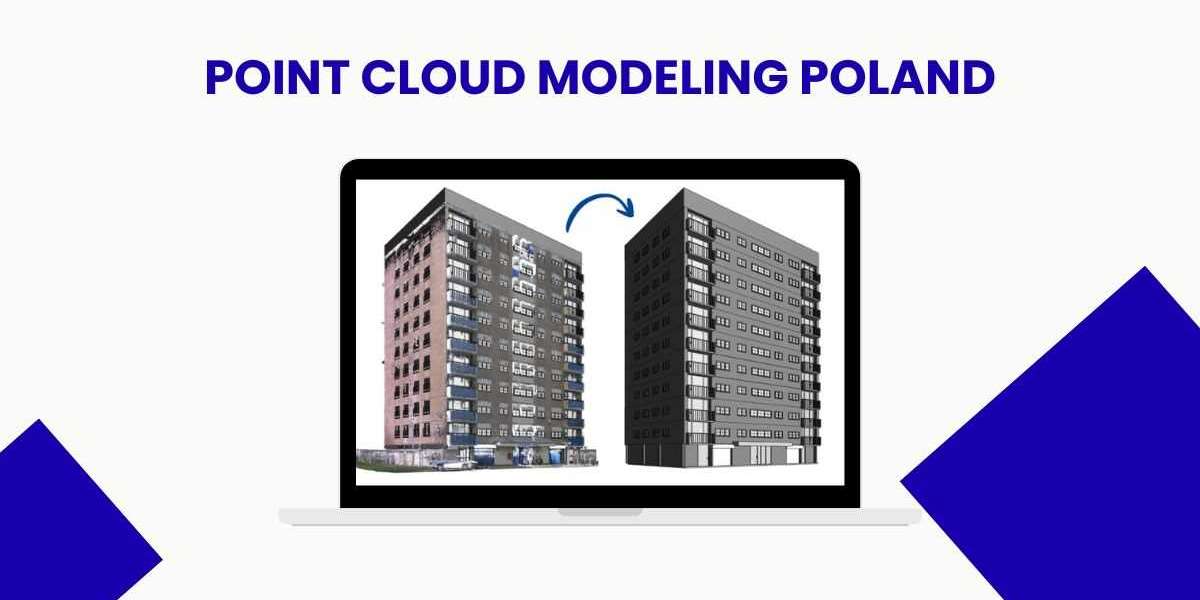In Poland’s dynamic architecture, engineering and construction (AEC) sector, the adoption of point cloud modelling is rapidly transforming how renovation, refurbishment and new-build projects are executed. By leveraging advanced laser scanning and BIM workflows, Point Cloud Modeling Poland are creating accurate digital representations of real-world structures—enabling better decision-making, fewer errors and faster delivery.
What is Point Cloud Modelling?
In essence, a point cloud is a collection of data points in three-dimensional space, captured by laser scanners or photogrammetry — each point carrying a coordinate (x, y, z) and often additional attributes (colour, intensity). In the AEC world, once you have that cloud of millions of points for an existing building or site, the next step is to convert it into a usable model—mesh or BIM-ready geometry. This is what “point cloud modelling” refers to.
Why Poland? The Local Landscape
Polish firms are increasingly investing in laser scanning, photogrammetry and point cloud processing services. For example, one Warsaw-based firm emphasises use of high-end scanners and software to digitise heritage buildings, industrial sites and infrastructure across Poland and Europe. Another company based in Kraków advertises point-cloud to 3D modelling services covering architecture, structural, MEP and heritage sectors.What this means: Poland offers both local expertise and cost-effective outsourcing opportunities for point-cloud projects.
Key Benefits for Projects in Poland
High accuracy as-built models: Capturing existing conditions at millimetre-level accuracy helps avoid surprises during renovation or reconstruction.
Efficient renovation heritage work: Many older buildings in Poland require sensitive restoration—point cloud modelling supports heritage BIM and detailed survey workflows.
Streamlined BIM integration: Point cloud data can feed into BIM platforms such as Autodesk Revit, enabling better coordination, clash detection and digital workflows.
Reduced rework cost savings: By identifying clashes, deviations or structural issues early via the digital model, teams avoid costly mistakes on-site.
Global outsourcing potential: Firms in Poland can serve international clients while offering competitive pricing and expertise.
Best Practices Considerations for Polish Projects
Choose the right level of detail (LOD): Depending on project needs (heritage vs. industrial vs. commercial) you’ll need different LODs. One provider mentions support for architectural, structural, HVAC data up to LOD 500.
Ensure data inputs are complete: To convert a point cloud into a usable model you’ll often need laser-scanned data, site photos, existing drawings, etc.
Leverage local expertise: Polish firms with experience in both scanning and modelling (for example heritage or industrial clients) can deliver high-quality results.
Mind software data formats: Point clouds come in many formats (.PTS, .PTX, .XYZ) and require compatible software for processing and modelling.
Consider data volume workflows: High-density point clouds can be heavy (millions of points); processing efficiency matters.
Clarify deliverables: Confirm whether deliverables include BIM integration, 2D drawings, mesh models or simply raw point cloud registration.
Why Outsource or Collaborate in Poland?
For international clients—whether architectural firms, contractors or facility managers—partnering with Polish specialists offers multiple advantages:
Access to skilled teams well-versed in point cloud and BIM workflows.
Competitive cost base compared to some Western European markets.
Time-zone and EU regulatory alignment (Poland is in EU and uses similar data/privacy standards).
Flexibility across sectors: heritage, industrial plants, infrastructure, commercial buildings.
Conclusion
In summary, point cloud modelling in Poland presents a compelling opportunity for AEC professionals looking to adopt — or outsource — Scan-to-BIM workflows. From capturing existing building geometry to producing high-fidelity BIM models, the combination of accuracy, efficiency and local expertise makes Poland a strong choice. Whether you’re planning a historic restoration in Kraków or an industrial retrofit in Warsaw, leveraging point cloud technology can give your project clarity, predictability and digital readiness.
For more blogs check zeustrahub







